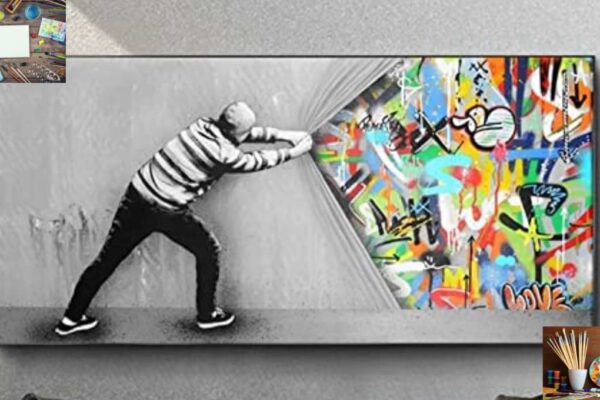Capturing Nature’s Beauty: Tips for Realistic Landscape Drawing
Have you ever seen a stunning landscape and wished you could paint or draw it? You just got lucky! Using only a pencil and paper, a landscape drawing can effectively convey the stunning beauty of the outdoors. You were learning to draw realistic landscapes, whether a scenic mountain range, peaceful woodland, or relaxing beach, can be a lot of fun and a great creative challenge. The following article will discuss several valuable techniques for depicting natural settings in art.
-
Choosing the Right Reference
The first step in drawing anything realistic is to find a photo to copy. Use a picture you took or located somewhere on the web. Look for bright pictures with interesting compositions that interest you. Your image will look more realistic and exciting if you add these elements.
-
Understanding Perspective and Proportions
Have you ever observed that everything seems smaller when you’re far away? One term for this is “perspective.” If you want your landscape drawings to look realistic, you need to master the art of perspective. When drawing distant objects, sketch them more extensively at the beginning and smaller as you move further away. Adding dimension to your artwork is as simple as using this technique.
-
Building a Solid Foundation
Consider your drawing to be a house: without a solid base, it will collapse. Make a quick sketch of the basic shapes that make up your surroundings to get started. Use these foundational lines to help you correctly arrange the remainder of your drawing’s elements.
-
Mastering Shading and Value
Shading helps an image look three-dimensional and realistic in landscape drawing. Consider where the light is coming from and how it will fall on the various elements of your scene. Light levels are reduced in darker areas and increased in brighter ones. Learn to use hatching and cross-hatching as shading techniques. Value can be improved through hatching by creating parallel lines. By creating intersecting lines, you may develop deeper blacks in cross-hatching.
-
Embracing Contrast and Highlights
The contrast in your drawing is the difference between the light and dark areas. It’s attention-grabbing and exciting in its own right. Focus on the high-contrast areas in your reference image and amplify those features in your drawing. When light shines directly on something, it causes that area to stand out as a highlight. Adding some highlights will make your image pop and come to life.
-
Capturing Texture and Detail
The use of light and dark values achieves your drawing’s contrast. It stands on its own as something exciting and novel. Draw more attention to the areas of strong contrast in your reference image. Direct illumination makes an object or surface more noticeable. Your photo will shine and come to life once you add some highlights.
-
Conveying Atmospheric Perspective
Have you ever noticed how mountains appear hazy and less defined? This is what we refer to as an “atmospheric perspective.” To do this, in your photo, you should tone down the contrast and sharpness of distant objects. The effects of distance and altitude on our vision are mimicked here.
-
Perfecting Natural Elements
Trees, rivers, rocks, and the sky are common subjects in landscape drawing. Beginning with a basic shape for the trunk, add branch shapes to complete the tree. Waves and shadows can represent the appearance of water. Rocks can be shaded to look textured, while clouds can be made to look fluffy.
-
Paying Attention to Light and Shadow
Light and shadow are the magic ingredients that make your drawing look three-dimensional. Study how light falls on objects in your reference image and replicate it in your picture. Shadows help ground things and create a sense of realism.
-
Patience and Practice
You can’t expect to become a master landscape painter overnight; it takes time and effort. If, at first, you fail, try again. Maintain a constant practice routine in which you challenge yourself to try new things, make mistakes, and improve with time. Every drawing is an opportunity to refine your skills and find your voice.
Conclusion
It’s essential to remember that becoming a proficient landscape painter takes practice. Keep trying until you succeed. Maintain a consistent fitness routine in which you can attempt new things, make mistakes, and gradually get better. You may hone your talents and develop your unique style with every new drawing you create.






